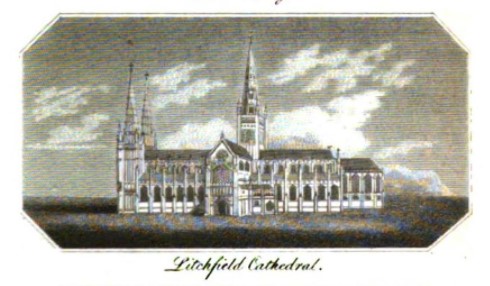
The trio of medieval spires rising from the body of the gothic cathedral made it a destination of interest for all eras of UK travelers, including those in the Regency era.
Located in Staffordshire, England, Lichfield’s construction, in its current architectural style, was commenced in around 1195.
Of particular interest were the new painted windows that restored former damage and were put in place in 1802 with help from Sir Brooke Boothby. Here is the story of the painted windows:
If you click on the text, it will take you to A Short Account of Lichfield Cathedral More Particularly of the Painted Glass with which Its Windows are Adorned (1811) that has a more detailed description of the windows.
Boothy was able to score the glass in large part because the abbey was dissolved during the Napoleonic Wars.
Extensive renovations began on the rest of the cathedral beginning in the Victorian era.
Lichfield made the news in 2003 with the discovery of an eight century sculpted panel depicting the Archangel Gabriel in the nave of the cathedral. The cathedral can still be visited today, both online and in person, for visits and for religious services: Lichfield Cathedral (lichfield-cathedral.org)









